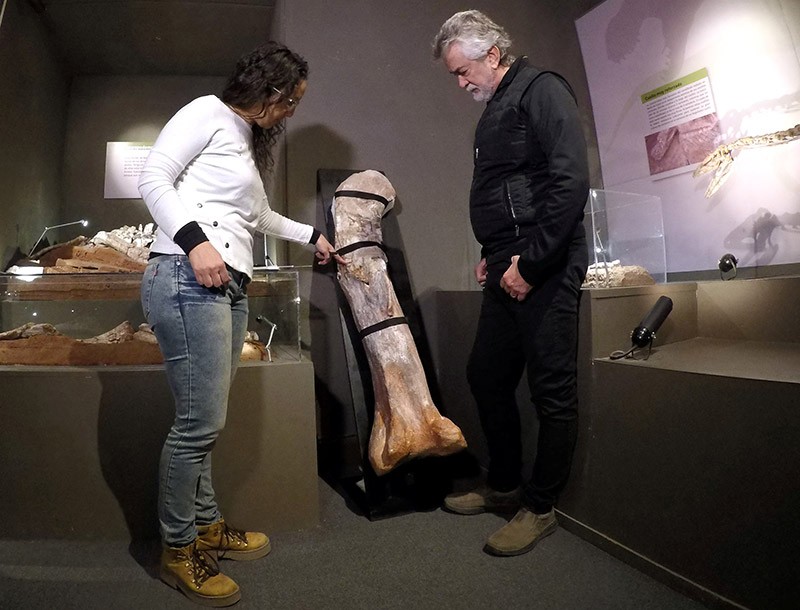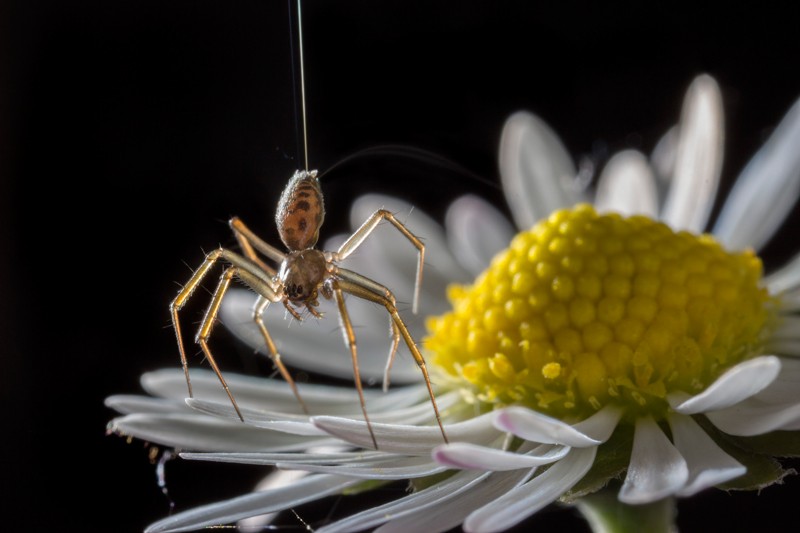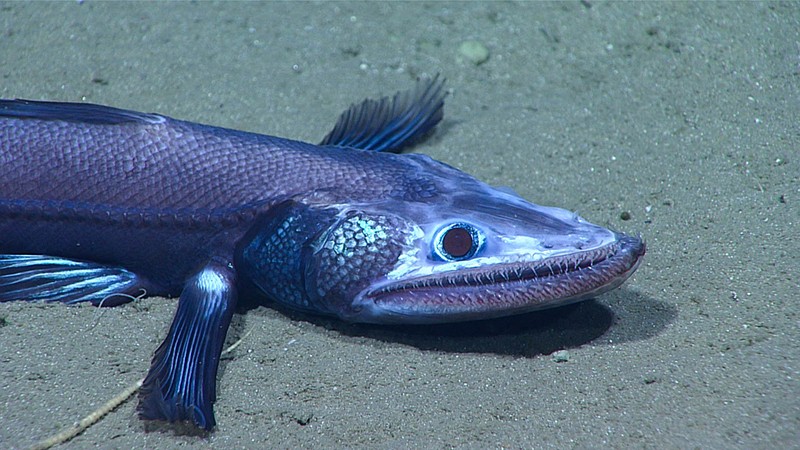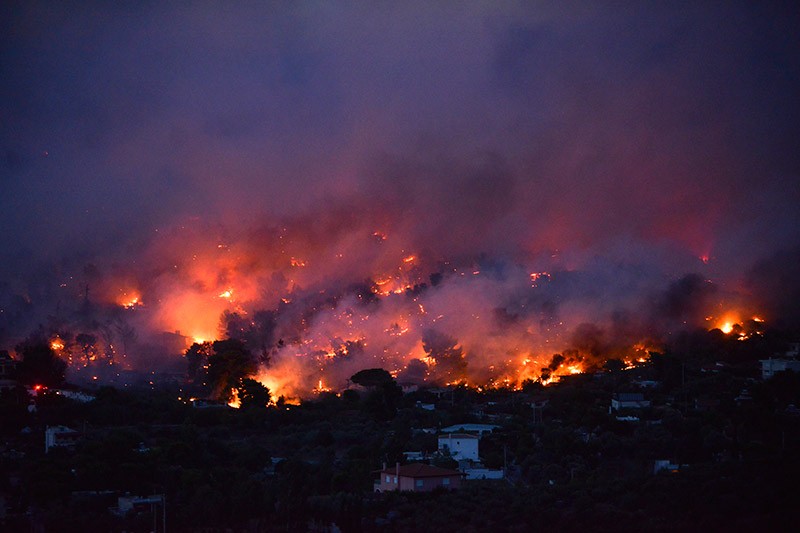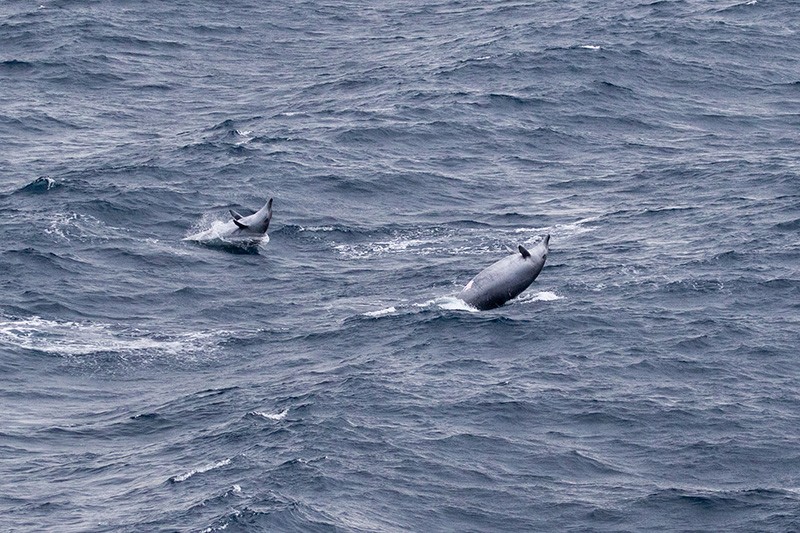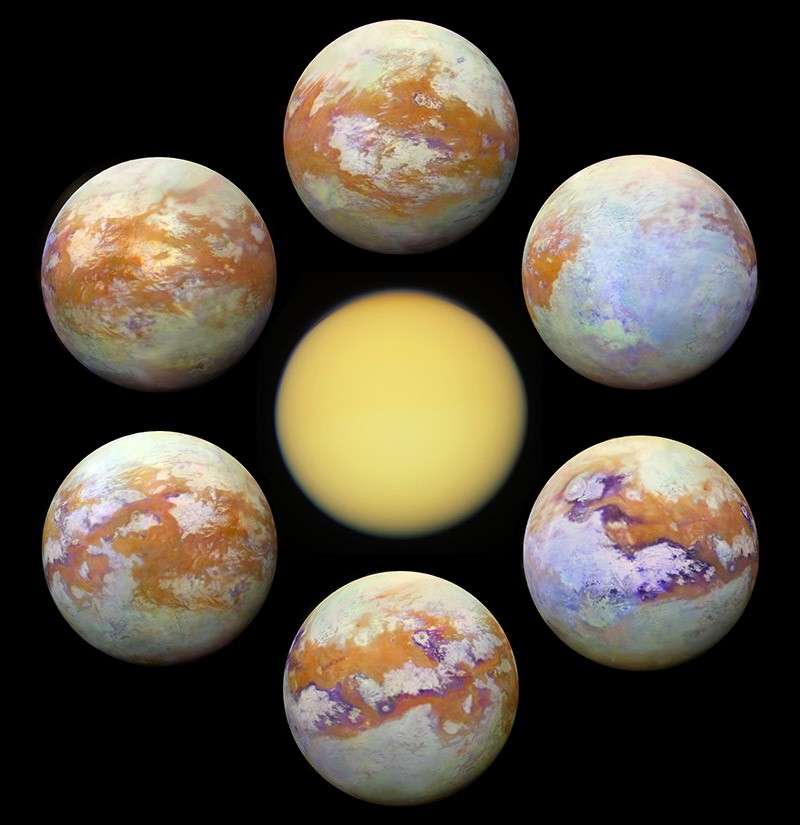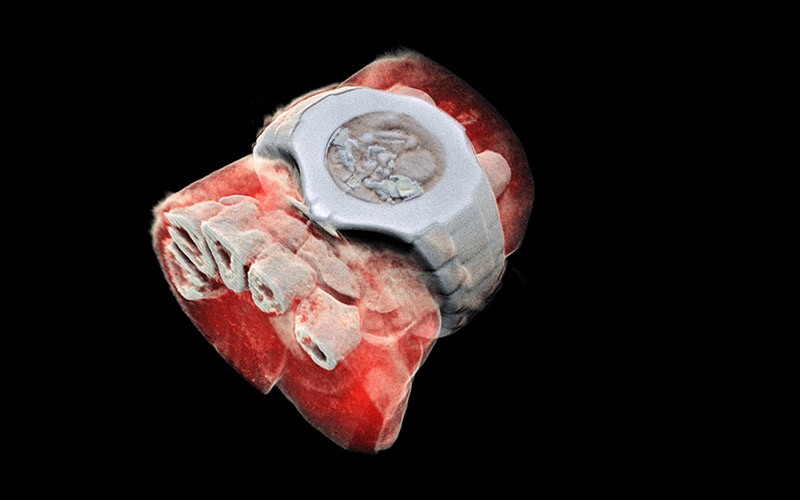(원문)
The month’s sharpest science shots — selected by Nature’s photo team.

Credit: Cao Yang/Xinhua News Agency/PA
Salty swish. These watery wisps were created by farmers harvesting brine shrimp in a salt lake in northern China’s Shanxi province. The small crustaceans are an important feed in the tropical-fish industry.
Credit: CHRISTOPH REICHWEIN/AFP/Getty Image
Red orb. On 27 July, skygazers were treated to the longest lunar eclipse of the century — a striking blood moon, seen here over Duisburg in western Germany. A lunar eclipse occurs when the Moon moves behind Earth and into its shadow. The reddish colour results from Earth’s atmosphere scattering blue light and leaving behind red light, which bends and falls onto the Moon’s surface.
Credit: Miguel Lo Bianco/Reuters
Big. Bone. Palaeontologists Cecilia Apaldetti and Ricardo Martínez stand next to a bone from what might have been the planet’s largest dinosaur, Ingentia prima. The gigantic specimen, discovered in Argentina and described in July, is more than 200 million years old. It probably came from one of the earliest giant sauropods — which weighed up to 10 tonnes — and changes our understanding of how dinosaurs in this lineage grew to such immense sizes.
Credit: Michael Hutchinson
Up in the air. Spiders can use their silk to become airborne and float at altitudes of up to 4 kilometres — a behaviour known as ballooning. Last month, researchers reported on a little-explored theory that electric currents in the air might assist, or even cause, ballooning. In experiments, they found that Linyphiid spiders (Erigone) ballooned in response to electric fields similar in strength to those in Earth’s atmosphere — suggesting that atmospheric electric fields are strong enough to provide lift, and perhaps trigger the behaviour in the first place.
Credit: Steve Lacker
Inside Brookhaven. This intricate image shows the Soft Inelastic X-ray Scattering (SIX) beamline at Brookhaven National Laboratory in New York state. In May, amateur and professional photographers were invited inside the lab to explore scientific instruments that aren’t usually accessible to the public. Lab staff selected ten winners from their resulting photographs and announced them last month.
Credit: Windows to the Deep 2018, NOAA-OER
Bottom dweller. A deep-sea expedition off the southeastern United States is turning up a treasure trove of images of rarely seen creatures. Dives by remotely operated vehicles have captured species such as this lizardfish, or bathysaurus, which was found hanging out at a depth of 1,771 metres, and an array of colourfully named critters: peanut worms, feather stars, cusk eels, cup corals and sea pens.
Credit: Angelos Tzortzinis/AFP/Getty
Blazing globe. Greece is one of the many places that have experienced deadly fires this summer, as temperatures hit record highs around the world. The blaze, pictured here near Athens on 23 July, is Europe’s worst for a century — more than 90 people have died.
Credit: Brian Clasper/ORCA
Hidden species. This sighting of a group of True’s beaked whales (Mesoplodon mirus) is the most detailed look experts have ever had of the species, which has been seen only a few times in its natural habitat. The pictures, released this month by conservation charity ORCA, were taken in the Bay of Biscay north of Santander, Spain. Beaked whales are a group of deep-diving, toothed cetaceans that have proved incredibly elusive. This group is thought to be the largest ever sighted of the species.
Credit: Andrew Aman and David Parichy/Univ. Virginia for eLife
Scale secrets. Despite being a ubiquitous species for genetic experiments, the zebrafish’s own development has been less researched. In a study published last month, scientists exploring the molecular pathways behind scale development released these images. They found that pathways that underlie the growth of scales, hairs and feathers are strikingly similar. Shown in yellow are cells that produce bony material, highlighted in pink.
Credit: NASA/JPL-Caltech/University of Nantes/University of Arizona
Patchwork moon. These 6 images of Saturn’s largest moon, Titan, were pieced together using 13 years of data from NASA’s Cassini satellite. They are some of the clearest global views ever made of the icy body’s surface.
Credit: Lancashire County Council
Window to the past. Summer heatwaves have dried out once-lush lawns — revealing ghosts of structures past. Aerial photographs have captured imprints of old forts, henges and even rose gardens, like this one at Gawthorpe Hall in Lancashire, UK — seen here at the height of its Victorian splendour in the 1850s, and in its modern guise.
Credit: MARS Bioimaging/Cover Images
Insides out. A New Zealand company has developed a technology that creates 3D colour X-rays. The scanner, being commercialized by MARS Bioimaging in Christchurch, uses a chip that was originally developed for tracking particles in collisions at CERN. The chip detects and counts each particle it hits, and this pixel information is run through powerful algorithms to generate detailed 3D images that differentiate bones, lipids and soft tissue.

